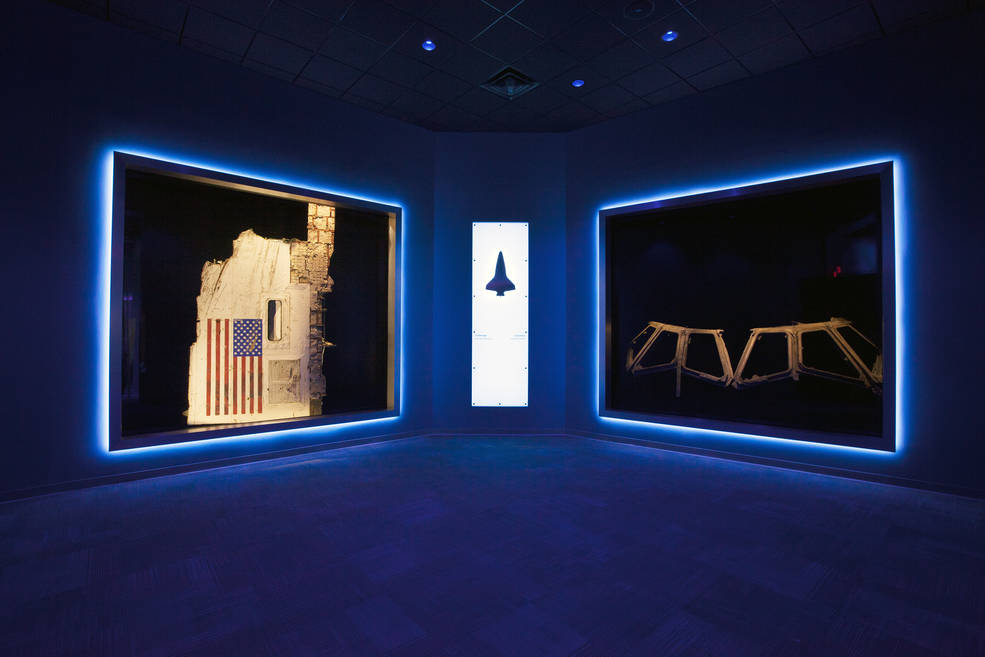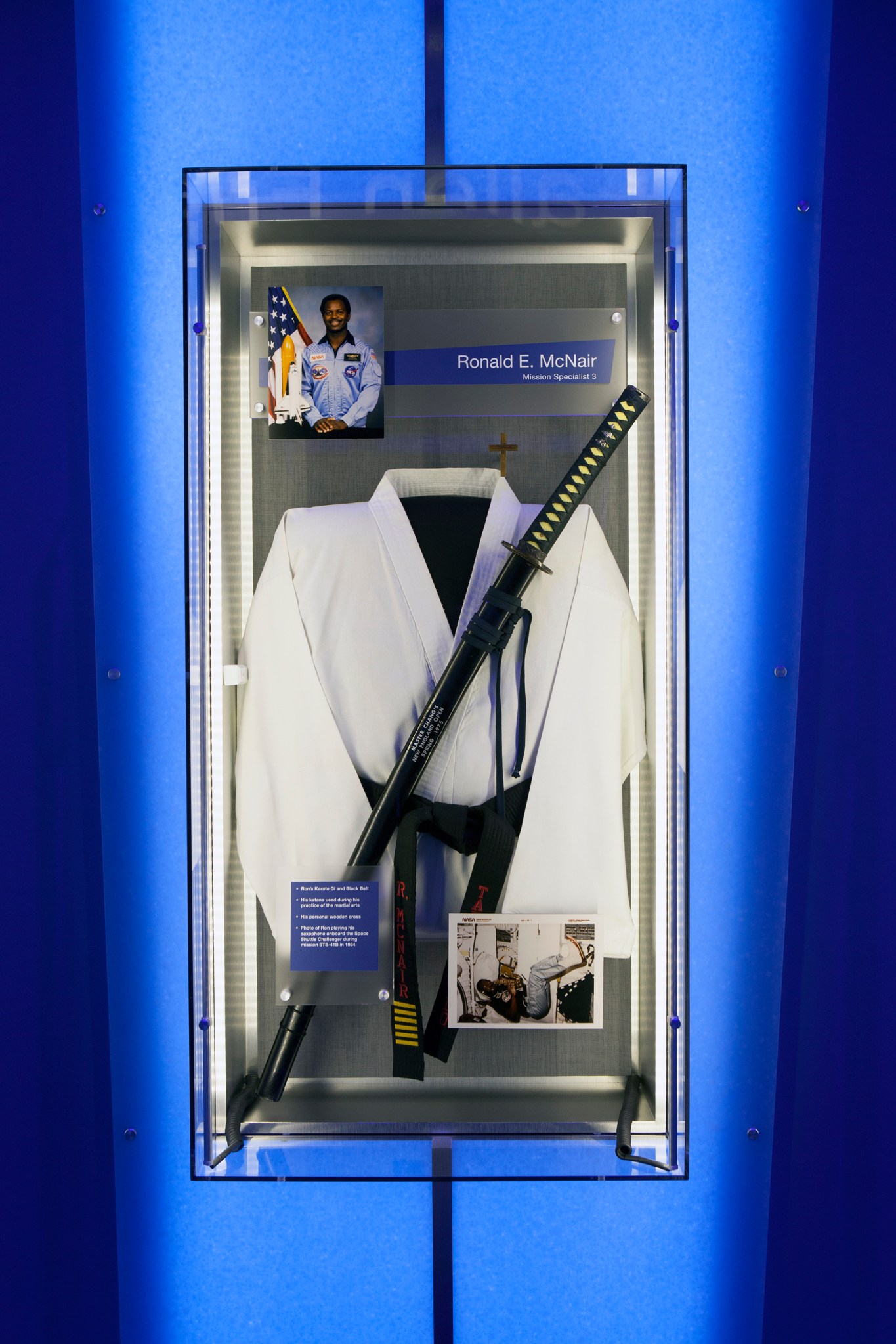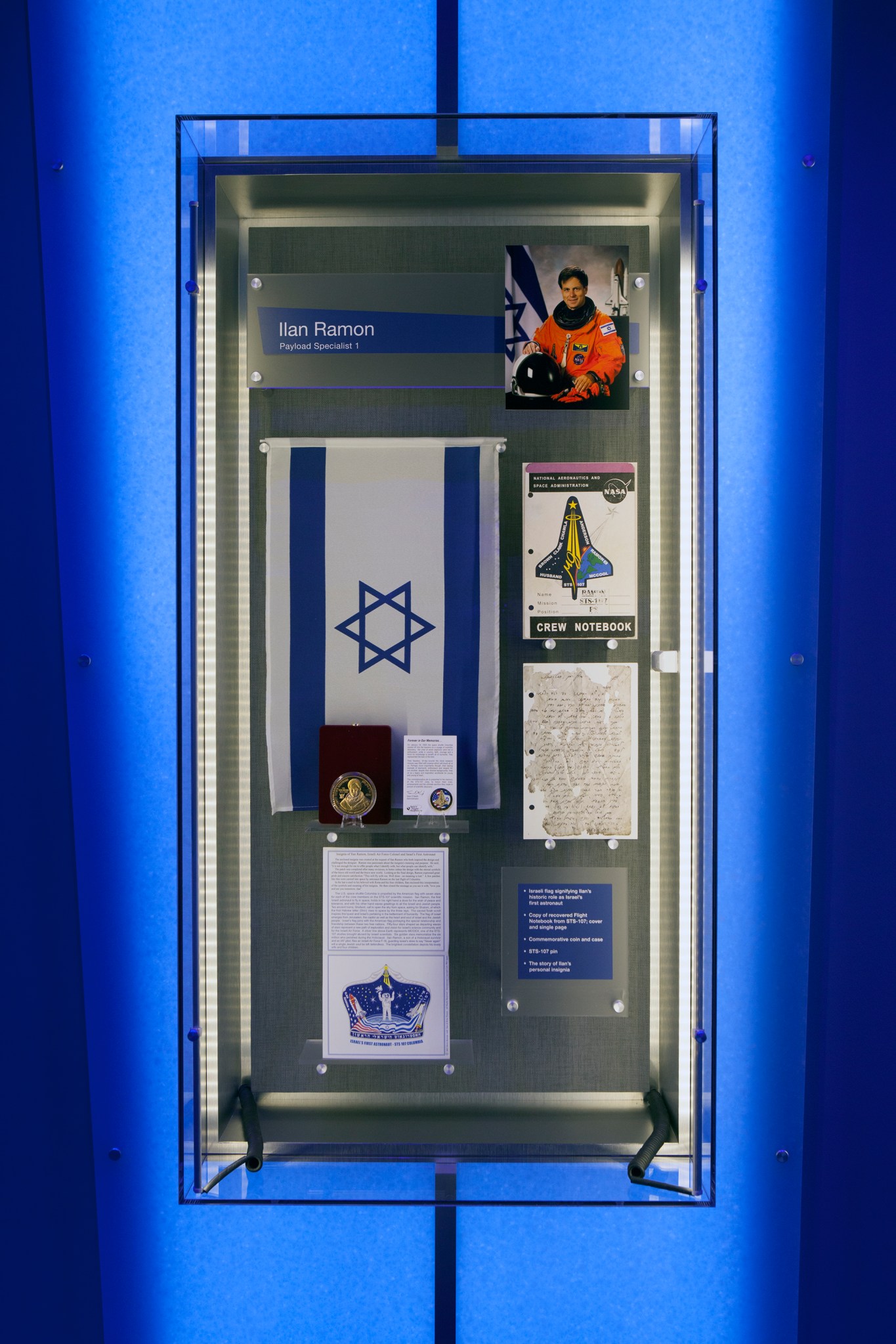The Space Shuttle Program story is full of spectacular successes. From its maiden voyage in 1981 to its final touchdown in 2011, the capable, reusable delta-winged vehicle captivated a generation. Teams of astronauts pulled off seemingly impossible feats in Earth orbit while a cast of thousands supported them from the ground.
But the shuttle story also includes the losses of 14 courageous astronauts and the nation’s first two shuttles, Columbia and Challenger. The tragedies galvanized the agency to learn from these painful events, not only to safely return the shuttle fleet to flight, but to help assure the safety of future explorers.
NASA and the astronauts’ families have collaborated to create a new, permanent memorial designed to honor the crews, pay tribute to the spacecraft and emphasize the importance of learning from the past. “Forever Remembered” opened today at the Kennedy Space Center Visitor Complex in Florida, where it completes NASA’s 30-year Space Shuttle Program told throughout the Space Shuttle Atlantis exhibit.
Video: Opening of “Forever Remembered”
Encompassing nearly 2,000 square feet, the memorial contains the largest collection of personal items of both flight crews. It also includes recovered hardware from both Challenger and Columbia, never before on display for viewing by the public.

Family members were present at a small ceremony Saturday as the memorial was formally opened by NASA Administrator Charles Bolden and Kennedy Space Center Director Bob Cabana, both veteran shuttle astronauts.
“The crews of Challenger and Columbia are forever a part of a story that is ongoing,” Bolden said. “It is the story of humankind’s evolving journey into space, the unknown, and the outer-reaches of knowledge, discovery and possibility. It is a story of hope.”
Temperatures at Kennedy Space Center were just a few degrees above freezing on the morning of Jan. 28, 1986, as Challenger lifted off on its 10th mission, STS-51L. One minute and 13 seconds into the flight, a booster failure caused an explosion that destroyed the vehicle, resulting in the loss of the crew of seven astronauts: Commander Francis Scobee, Pilot Michael J. Smith, Mission Specialists Judith Resnik, Ellison Onizuka and Ronald McNair, and Payload Specialists Gregory Jarvis and Christa McAuliffe, a New Hampshire schoolteacher.
Seventeen years later, on Jan. 16, 2003, NASA’s flagship orbiter Columbia thundered into orbit on STS-107, a 16-day science mission. On board were Commander Rick Husband, Pilot Willie McCool, Payload Commander Michael Anderson, Mission Specialists Kalpana Chawla, David Brown and Laurel Clark, and Payload Specialist Ilan Ramon, Israel’s first astronaut. On Feb. 1, 2003, the orbiter broke apart in the skies above east Texas as it re-entered Earth’s atmosphere on the way to a planned landing at Kennedy. Seven more lives were lost.
“I believe that it’s important to share this story with everyone, and not just push it aside, or try to hide it,” Cabana said. “These crews and these vehicles are part of who we are as an agency, and a nation. They tell the story of our never ending quest to explore, and our undying spirit to never give up.”
“Forever Remembered” is designed to be an emotional experience, according to NASA’s Mike Ciannilli, who has been NASA’s lead on the memorial project since it began about four years ago. At the time, Ciannilli was a NASA Test Director and Landing Recovery Director.
“Emotion is timeless,” Ciannilli explained. “It’s important that we don’t lock this experience into a certain time, a certain place.”
“I knew it would be very emotional to see, but honestly, I didn’t expect to be so impacted by it. I just can’t stop thinking about it. As you walk in, you know you’re in a special place,” Evelyn Husband Thompson said of the memorial. Her husband, Rick, commanded Columbia on STS-107.
Video: Family Members Discuss “Forever Remembered”
Visitors enter the memorial through a doorway flanked by the STS-51L and STS-107 mission patches. The orbiter and crew are remembered through individual collections lining the walls: Challenger on the left, Columbia on the right. The items were carefully chosen to share each astronaut’s passions, talents and achievements, allowing their personalities to shine through.
Husband’s cowboy boots and Bible. A small aircraft Smith hand-carved for his wife. Anderson’s vintage Star Trek lunch box. A research paper authored by Judy Resnik, displayed alongside sheet music for violin and piano. There are flight jackets, family photographs and numerous other artifacts offering a glimpse into the people behind the names on the mission patches. Many items were loaned by the families; others belong to NASA.
Video: Astronauts Remembered in New Memorial
“The families have been unbelievably gracious, inspiring, warm and giving,” Ciannilli said. “There were times they provided comfort to me as I worked on this, and still do.”
At the end of the first hall, the warmth of the astronauts’ collections gives way to a small gallery where guests will see firsthand the toll these events took on the shuttle hardware. A section of Challenger’s fuselage displaying the American flag stands at left; on the right, the flight deck windows of Columbia are placed at eye level.
Video: Challenger and Columbia
“When I look into those windows, I see John Young and Bob Crippen preparing to launch on the boldest test flight in history, the first flight of America’s space shuttle, Columbia,” Cabana said.
“I see a much younger Bob Cabana launching to space on his first command, and I see Rick and Willie and the rest of the 107 crew smiling and experiencing the wonders of space on the final flight of Columbia.”
While great care has been taken to preserve the pieces, they’re real, bearing the scars of the trauma each shuttle endured.
“It’s a beautiful remembrance of all the shuttles, with the marvelous display of Atlantis. Nothing compares to it in the world,” said June Scobee Rodgers, whose husband, Dick Scobee, commanded Challenger on STS-51L. “But Challenger and Columbia are not forgotten, and they’re well represented.”
But that is not where the story ends.
“Forever Remembered” concludes with a focus on the recovery and return-to-flight efforts, including the emotional toll these events had on the nation, the challenges involved in recovery, and the triumph of return to flight. A looping video shares heartfelt letters written by children as they shared their condolences and messages of hope.
After each loss, investigators spent months looking at recovered hardware, poring over data and conducting analysis to determine what had gone wrong. A second video reveals rarely seen photos and footage of this painstaking process.
The space shuttle team pulled together to fix the problems and return the program to flight each time. Any less effort would not have honored the fallen astronauts or their missions. Shuttle Atlantis, on display nearby, flew the final mission of the Space Shuttle Program, STS-135.
That determined spirit is alive in every launch. In a sense, every flight is a return to flight — another opportunity to build upon success and experience.
“The artifacts here on display are not easy to look at. Many of them are on display for the very first time,” Bolden said. “It is our hope that by making them available for the public to view, we will help remind the world, that every launch, every discovery, every measure of progress, is possible only because of the sacrifice of those we have lost.”
Among McAuliffe’s artifacts is a quote: “I touch the future. I teach.”
The lessons of Challenger and Columbia will endure as we continue to reach for the stars.






























